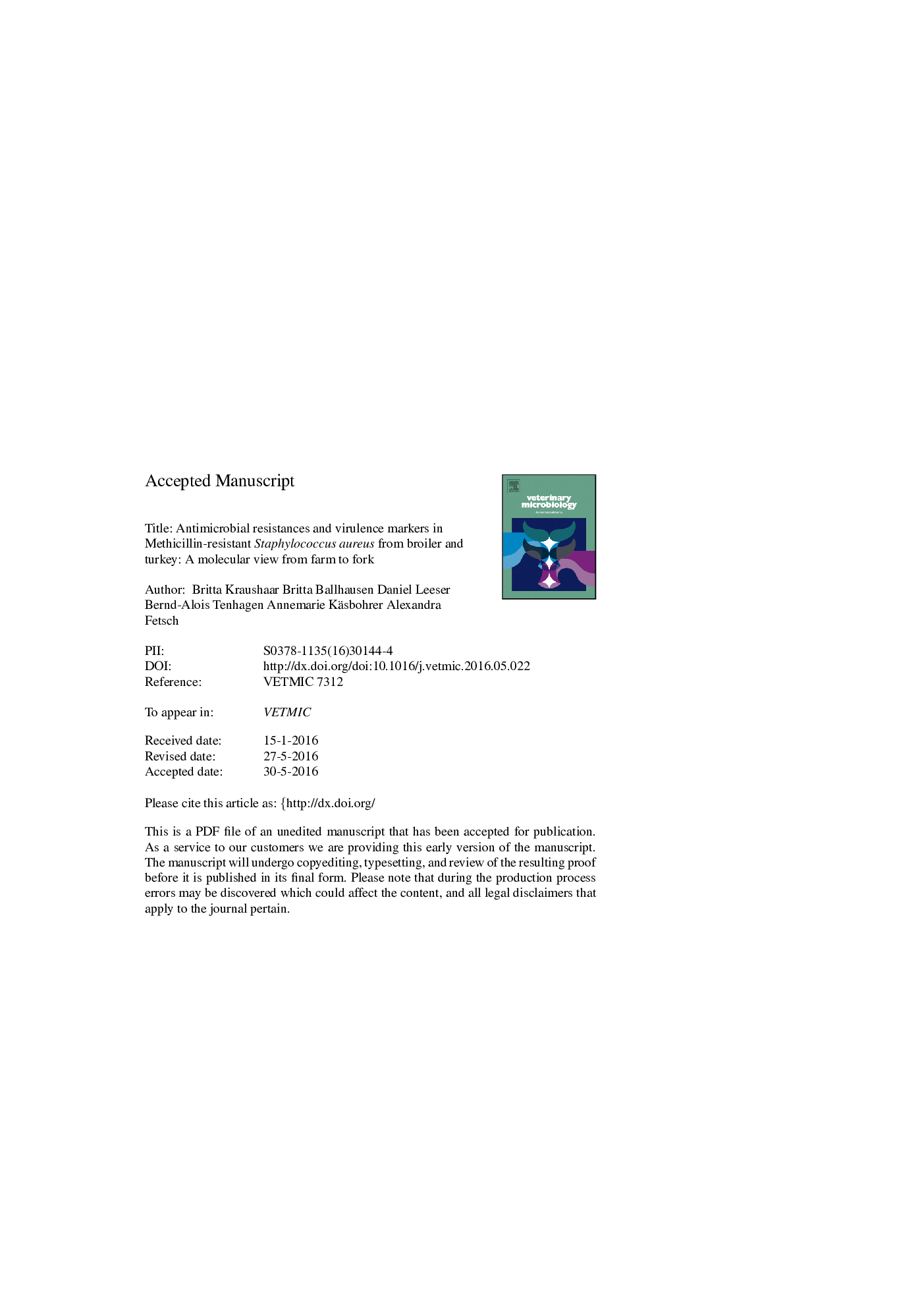| کد مقاله | کد نشریه | سال انتشار | مقاله انگلیسی | نسخه تمام متن |
|---|---|---|---|---|
| 5545360 | 1555323 | 2017 | 6 صفحه PDF | دانلود رایگان |
عنوان انگلیسی مقاله ISI
Antimicrobial resistances and virulence markers in Methicillin-resistant Staphylococcus aureus from broiler and turkey: A molecular view from farm to fork
ترجمه فارسی عنوان
مقاومت ضد میکروبی و نشانگرهای ویروسی در استافیلوکوکوس اورئوس مقاوم به متیسیلین از جوجه های گوشتی و ترشی: دیدگاه مولکولی از مزرعه تا چنگال
دانلود مقاله + سفارش ترجمه
دانلود مقاله ISI انگلیسی
رایگان برای ایرانیان
کلمات کلیدی
موضوعات مرتبط
علوم زیستی و بیوفناوری
علوم کشاورزی و بیولوژیک
علوم دامی و جانورشناسی
چکیده انگلیسی
Little is known about the characteristics of MRSA occurring along the broiler and turkey production chains. The aim of this study was to characterise and compare MRSA of turkey and broiler origin sampled on different production levels using a DNA microarray and antimicrobial susceptibility testing. Main differences could be observed in the prevalence of the resistance genes erm(C), aacA-aphD and tet(K) and the number of non-wild type strains with minimum inhibitory concentration values (MICs) above the epidemiological cut-off values (ECOFFs) for gentamicin and kanamycin. Overall, MRSA with non-wild type phenotype for the macrolide-lincosamide-streptogramin group, tetracycline, and trimethoprim were found in more than 70% of poultry isolates. Non-wild type isolates carrying the qacC gene conferring resistance to quaternary ammonium compound disinfectants were found at all production stages in similar frequencies. Regarding the presence of enterotoxin genes in poultry-derived MRSA the enterotoxin gene cluster (egc) was only found in Non-CC (clonal complex) 398 strains. Three CC398 strains harboured the genes sed (from turkey at slaughter and broiler meat) and sea-N315 (from a chicken carcass). One Non-CC398 strain isolated from turkey meat was found positive for the seb gene and also enterotoxin production. Similarity analysis based on selected resistance and virulence markers revealed a high clonality among Non-CC398 isolates. Isolates of the same clonal complex clustered together according to their common virulence and resistance profiles. Strains of CC9 were grouped in two subclusters due to different resistance genes. Our results underline, that there are other poultry associated clones of MRSA (mainly CC9 and CC5) besides the predominant CC398 which are similar in both poultry species.
ناشر
Database: Elsevier - ScienceDirect (ساینس دایرکت)
Journal: Veterinary Microbiology - Volume 200, February 2017, Pages 25-32
Journal: Veterinary Microbiology - Volume 200, February 2017, Pages 25-32
نویسندگان
Britta Kraushaar, Britta Ballhausen, Daniel Leeser, Bernd-Alois Tenhagen, Annemarie Käsbohrer, Alexandra Fetsch,
